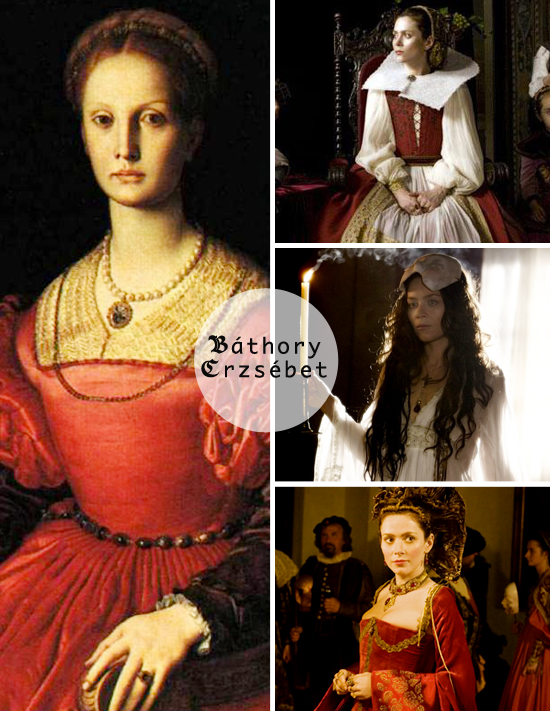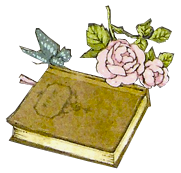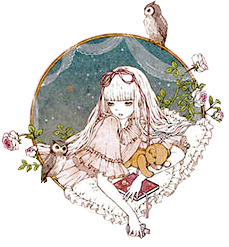La Barbe bleue and the Blood Countess
lundi 21 avril 2014
Let's talk about 2 controversial historic figures whose very special life story inspired many tales and horror stories: Gilles de Rais and Báthory Erzsébet. The only thing those two have in common, save from their fictional legacy, is that they're both said to be serial killers. You must have heard of Báthory Erzsébet already as she's mostly known today for supposedly being a "vampire" but you may not have heard of Gilles de Rais if you're not French or don't really know about Medieval history. Gilles de Rais is said to be the man who inspired Perrault's "Barbe bleue".
 Gilles de Rais (1404-1440)
Gilles de Rais (1404-1440)
Gilles de Rais was a Breton knight, he was a companion in arms of Joan of Arc and a commander of the French army during the 100 years' war. Gilles de Rais was fierce in battle but according to many contemporary sources he seemed to be well liked by the king Charles VII and by Joan of Arc. He was devout and generous but seemed to be pretty uncontrollable sometimes, spending very large amounts of money in fine clothing and jewellery.

Gilles de Rais by Eloi Firmin (19th century) - Vincent Cassel as Gilles de Rais in "The Messenger"
In 1440, Gilles de Rais was arrested and found guilty of a count of about 60 gruesome murders of children whose age was ranging from 6 to 18. Both of his bodyservants and said accompliced confessed the crimes, adding very gruesome details, and peasants from the neigbouring villages said that they had seen many children going through the gates of Gilles' castle and were never seen again. He was also charged with sodomy and heresy and was sentenced to death by hanging and burning.
Nowadays the veracity of Gilles de Rais' guiltiness is subject to controversy. The bodyservants' confessions were indeed obtained through torture, and both the Church and the duke of Britany, who was the secular judge at Gilles' trial, really wanted him dead as they both had much to gain from it (the bishop of Nantes did not like Gilles and they were often fighting and the duke of Britany wanted Gilles' territory for his own). So much for the so-called serial killer...
 Erzsébet Báthory (1560-1614)
Erzsébet Báthory (1560-1614)
Erzsébet was an educated woman who could read and speak 4 languages. She was married to Ferenc Nadasdy when she was only 14. While her husband was at war (fighting against the Ottomans), Erzsébet had to manage her husband's huge estate by herself and she was apparently very good at it. After her husband's passing, in 1604, Erzsébet found herself to be the most powerful widow of Hungary.

Anna Friel in "Báthory"
Between 1602 and 1604, rumors reached the court in Vienna, these rumors said that several young girls living near the countess' castle had been reported missing. King Mathias II assigned György Thurzo to investigate. Several witnesses were questionned and most of them said that many young girls had been lured to Csejte castle by offers of well-paid work. Some witnesses added that the young girls were tortured in several ways and killed or left to starve to death. It seemed that the count of her victims was more than 600, Erzsébet would then be the most prolific serial killers of history. The countess was never put on trial for her "crimes" tbough as her powerful family had her imprisonned in her own castle, immured in a set of rooms while her accomplices were put to death and burned.
Later, Erzsébet's story inspired many legends and tales. Some say she used to bleed her victims and bath in their blood to retain her beauty and youth. She was then associated with the vampire myths. Nowadays it seems that Erzsébet was most likely not as sadistic or as prolific as she was said to be. Some historians tend to consider she was "evicted" by the king Mathias II mostly because he owed her a great amount of money he could not pay back. Moreover, Erzsébeth was a powerful and educated woman in a country and society ruled by men so she was not really kindly considered by her male counterparts.
Libellés : fairytales, history
C'est toujours un plaisir de lire tes articles, toujours bien documentés et articulés, et très intéressants également !
Merci Rebecca, je suis contente de lire que tu apprécies mes articles! ^^
La Barbe bleue and the Blood Countess
Let's talk about 2 controversial historic figures whose very special life story inspired many tales and horror stories: Gilles de Rais and Báthory Erzsébet. The only thing those two have in common, save from their fictional legacy, is that they're both said to be serial killers. You must have heard of Báthory Erzsébet already as she's mostly known today for supposedly being a "vampire" but you may not have heard of Gilles de Rais if you're not French or don't really know about Medieval history. Gilles de Rais is said to be the man who inspired Perrault's "Barbe bleue".
 Gilles de Rais (1404-1440)
Gilles de Rais (1404-1440)
Gilles de Rais was a Breton knight, he was a companion in arms of Joan of Arc and a commander of the French army during the 100 years' war. Gilles de Rais was fierce in battle but according to many contemporary sources he seemed to be well liked by the king Charles VII and by Joan of Arc. He was devout and generous but seemed to be pretty uncontrollable sometimes, spending very large amounts of money in fine clothing and jewellery.

Gilles de Rais by Eloi Firmin (19th century) - Vincent Cassel as Gilles de Rais in "The Messenger"
In 1440, Gilles de Rais was arrested and found guilty of a count of about 60 gruesome murders of children whose age was ranging from 6 to 18. Both of his bodyservants and said accompliced confessed the crimes, adding very gruesome details, and peasants from the neigbouring villages said that they had seen many children going through the gates of Gilles' castle and were never seen again. He was also charged with sodomy and heresy and was sentenced to death by hanging and burning.
Nowadays the veracity of Gilles de Rais' guiltiness is subject to controversy. The bodyservants' confessions were indeed obtained through torture, and both the Church and the duke of Britany, who was the secular judge at Gilles' trial, really wanted him dead as they both had much to gain from it (the bishop of Nantes did not like Gilles and they were often fighting and the duke of Britany wanted Gilles' territory for his own). So much for the so-called serial killer...
 Erzsébet Báthory (1560-1614)
Erzsébet Báthory (1560-1614)
Erzsébet was an educated woman who could read and speak 4 languages. She was married to Ferenc Nadasdy when she was only 14. While her husband was at war (fighting against the Ottomans), Erzsébet had to manage her husband's huge estate by herself and she was apparently very good at it. After her husband's passing, in 1604, Erzsébet found herself to be the most powerful widow of Hungary.

Anna Friel in "Báthory"
Between 1602 and 1604, rumors reached the court in Vienna, these rumors said that several young girls living near the countess' castle had been reported missing. King Mathias II assigned György Thurzo to investigate. Several witnesses were questionned and most of them said that many young girls had been lured to Csejte castle by offers of well-paid work. Some witnesses added that the young girls were tortured in several ways and killed or left to starve to death. It seemed that the count of her victims was more than 600, Erzsébet would then be the most prolific serial killers of history. The countess was never put on trial for her "crimes" tbough as her powerful family had her imprisonned in her own castle, immured in a set of rooms while her accomplices were put to death and burned.
Later, Erzsébet's story inspired many legends and tales. Some say she used to bleed her victims and bath in their blood to retain her beauty and youth. She was then associated with the vampire myths. Nowadays it seems that Erzsébet was most likely not as sadistic or as prolific as she was said to be. Some historians tend to consider she was "evicted" by the king Mathias II mostly because he owed her a great amount of money he could not pay back. Moreover, Erzsébeth was a powerful and educated woman in a country and society ruled by men so she was not really kindly considered by her male counterparts.
Libellés : fairytales, history
The legend of Briar Rose
"The fateful slumber floats and flows
About the tangle of the rose."

 평화 [pʰjəŋ.hwa]
평화 [pʰjəŋ.hwa]
Child of the 80's born in Seoul (South Korea) - Living and working in Paris (France) - Languages spoken: French / English (surprise surprise, despite my place of birth I don't speak or understand a word of Korean!) - Languages studied but not practiced enough to speak them fluently: Spanish / Japanese / Latin (not spoken anymore anyway) / Ancient Greek - Studied: History / specialised in French Medival History -





















 평화 [pʰjəŋ.hwa]
평화 [pʰjəŋ.hwa]
Enregistrer un commentaire
1. Comments are moderated.
2. Please don't post spam/advertisements, or your comment won't be published.
3. At last, thanks for your comment!